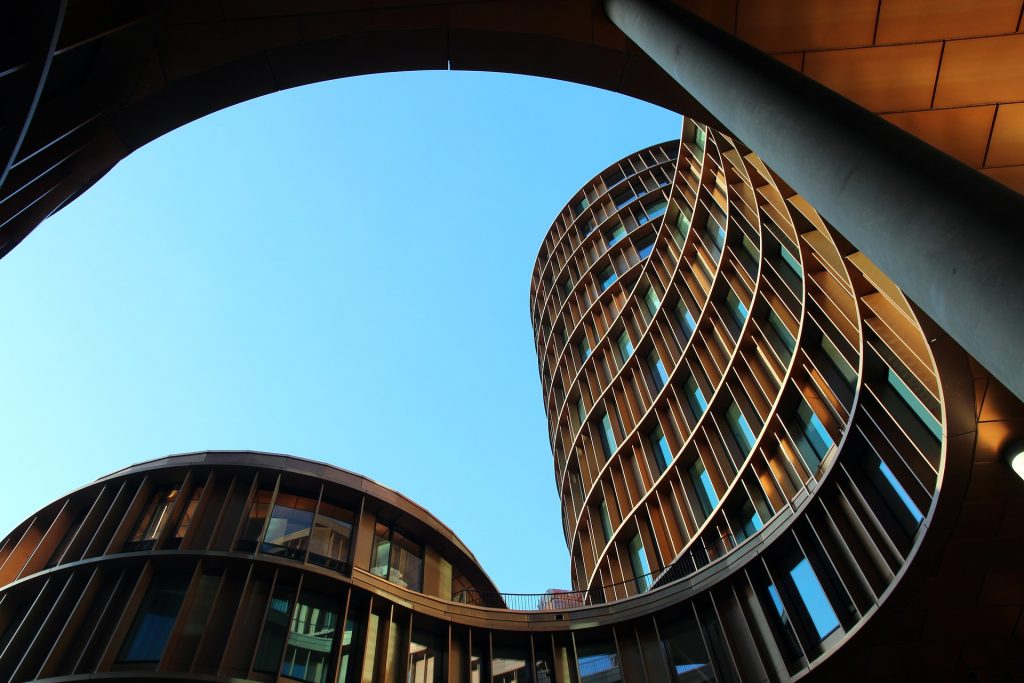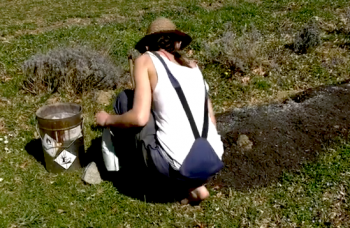Bauhaus coming full-circle: sustainable buildings in a resource-efficient economy

One hundred years on, the influential building, art and design movement is born again amid Europe’s push to reduce emissions in the carbon-heavy housing sector. Like its forerunner of the 1920s, the New European Bauhaus is designed for form, function, good looks and community uplift – with some 21st century additions too.
In the world of invention, innovation and design, very little goes to waste. And in today’s ideas-hungry world, the achievements of decades past are all ripe for reimagination.
So it is with Bauhaus, that uber-cool movement founded by Walter Gropius in Weimar, Germany, in 1919, re-imagined a century later by the EU as the New European Bauhaus (NEB).
The original Bauhaus sought to marry emerging mass production and industrial methods with artistic individualism. It embraced architecture, art, industrial and interior design. It proved that function, form and aesthetics could, and should, meet.
But today’s model encapsulates one innovation that Bauhaus Mark I didn’t have: circularity, the imperative for the continuous recycling of buildings and construction materials, virtually eliminating waste and minimising the need for new resources.
„Every movement has its own look and feel. And we need to give our systemic change its own distinct aesthetic – to match style with sustainability„, European Commission President Ursula Von Der Leyen said as she launched the NEB concept in September 2020.
She linked the concept intimately to NextGenerationEU, the Union’s post-pandemic recovery plan, which is often promoted as ‘building back better’. But in the context of the Commission’s strategic approach to Europe’s long-term future, a more fitting description might be ‘building back greener and more circular’. And NEB is at the heart of this approach.
As our climate heats up, the case for sustainability in resource-hungry industries like construction becomes ever more pressing. According to the European project HOUSEFUL, construction and buildings swallow 50 per cent of the EU’s resource consumption, generate 46 per cent of its waste and account for 40 per cent of EU carbon emissions.
This project is crafting comprehensive solutions for the circular management and efficient use of water, waste, energy and material resources for all stages of in the life-cycle of Europe’s housing, old and new. And the emergence of NEB as a standard-bearer for European innovation in the way we live and work in the twenty-first century has presented new opportunities and perhaps challenges.
„We felt as though she had read our minds“,says Sorcha Edwards from Housing Europe – a partner organisation in both HOUSEFUL and the New European Bauhaus – on Von Der Leyen’s unveiling speech and its focus on style and substance.
NEB also seeks to tackle the broader societal issues linked to our built environment, while advocates for social cohesion. It sees the combination of creativity and greening as vital components in strengthening communities and quality of life.
„The original Bauhaus was partly about harnessing design and material innovation, bringing in the cultural sector to improve people lives and make the dream of a decent home a reality for more people“, Edwards says. „With this perspective it would be difficult to imagine a New European Bauhaus which does not face up to the realities of just how we really are living together“.
Another obvious driver of change – and a change at the heart of NEB’s approach – is the urgency of the climate crisis. „The EU’s climate goals are massive, and the housing sector, the building sector, are among the biggest carbon emitters these days“, Edwards says. „So we will integrate in manifold ways carbon storage within buildings, using biological materials like wood, or hemp, or hay or wool as insulation. The green transition in housing and construction will open new areas for all these bio-based building material producers“, she adds.
Making climate action integral is one of the key challenges for the New European Bauhaus, says Johannes Kisser at alchemia-nova in Austria, another project’s partner and a consultancy that researches concepts and technologies that use renewable, degradable or entirely recyclable building components and systems.
„The good thing also about the New European Bauhaus is that it is a very integrated approach. They want to take people on board, be they researchers or the developers or the cutting-edge sustainability people“, says Kisser.
When the NEB asked Europeans to submit examples of ‘beautiful, sustainable and inclusive ways of living’ to help refine its focus, alchemia-nova’s submission highlighted HOUSEFUL’s integrated circularity solutions”.
„What we do is we follow three ideas: circular, nature-based and participatory. If we can follow these key principles I think we can manage quite well“, Kisser says. „This New European Bauhaus, it’s like a social design. Social design and social inclusion are more in the forefront“.
In the 1920s, the Bauhaus movement spoke boldly and positively of a brave new world, following years of devastating conflict. As Europe looks towards cementing the post-pandemic recovery and building resilience, the New European Bauhaus has the same optimistic goal.
And it has the same belief in Europe’s capacity for cultural and social progress through beautifying the built environment, now driven by the obligation – and the opportunity – to make sustainability and circularity the driver of this renewal.
by Paul Anderson
Image by Maike und Björn Bröskamp from Pixabay




